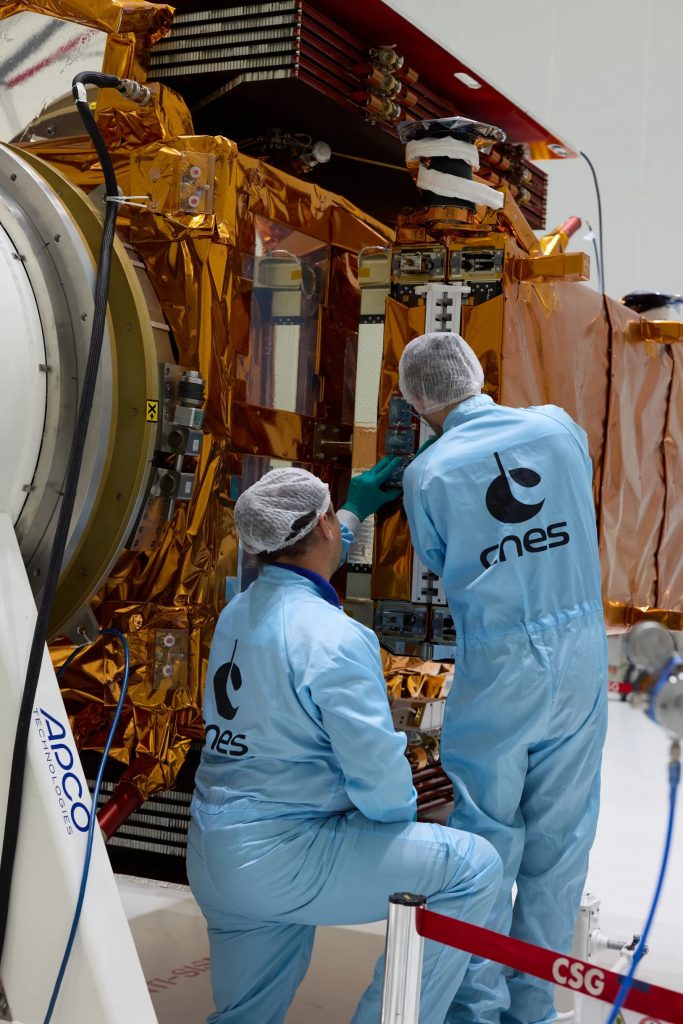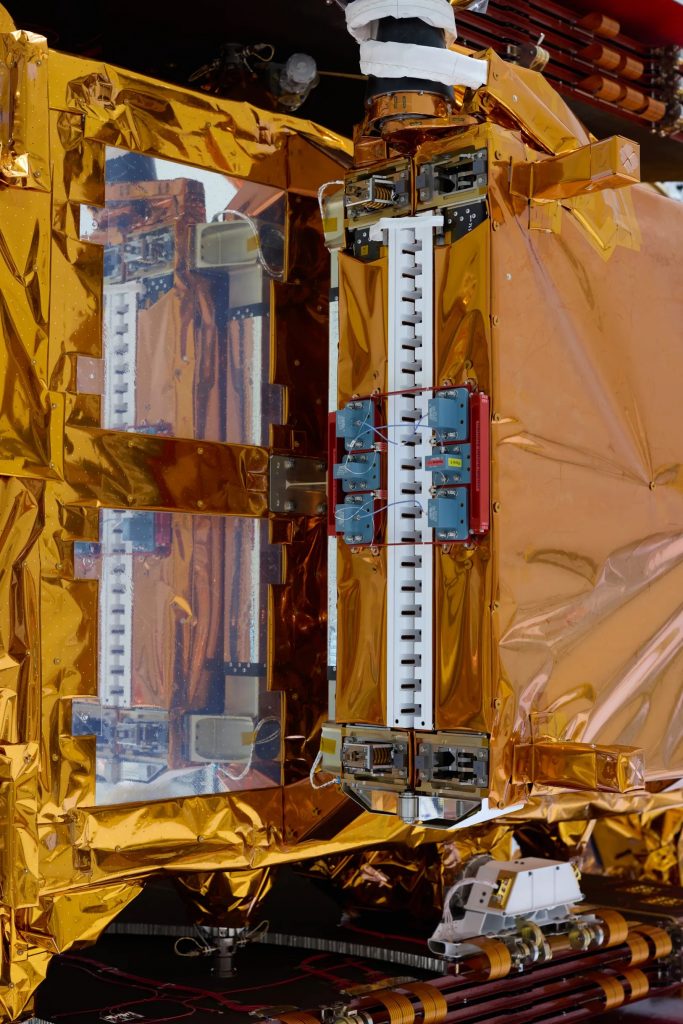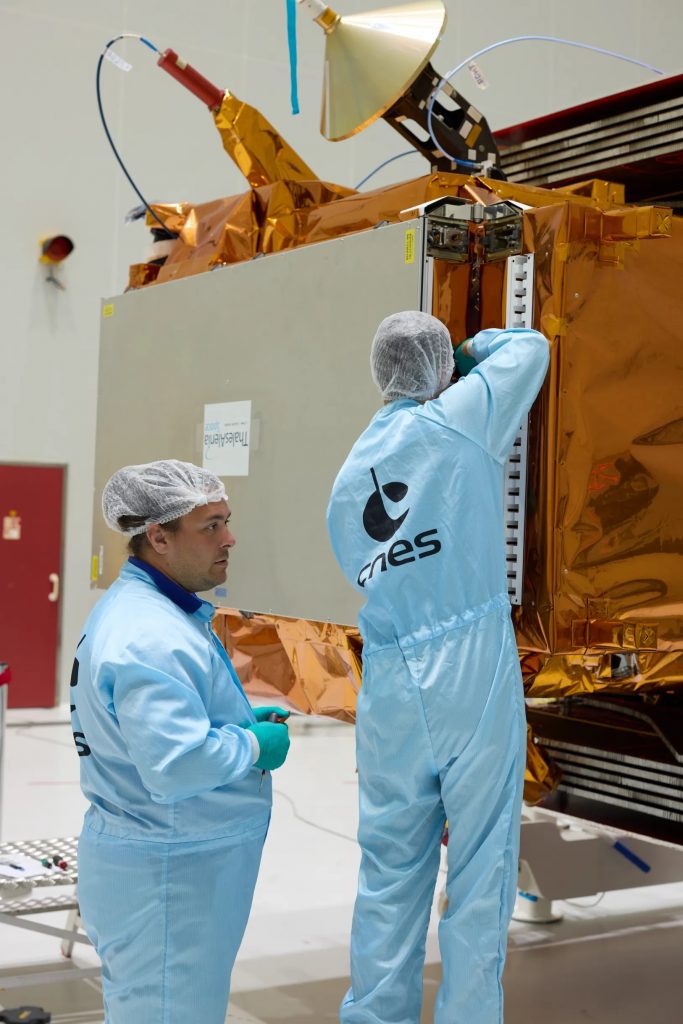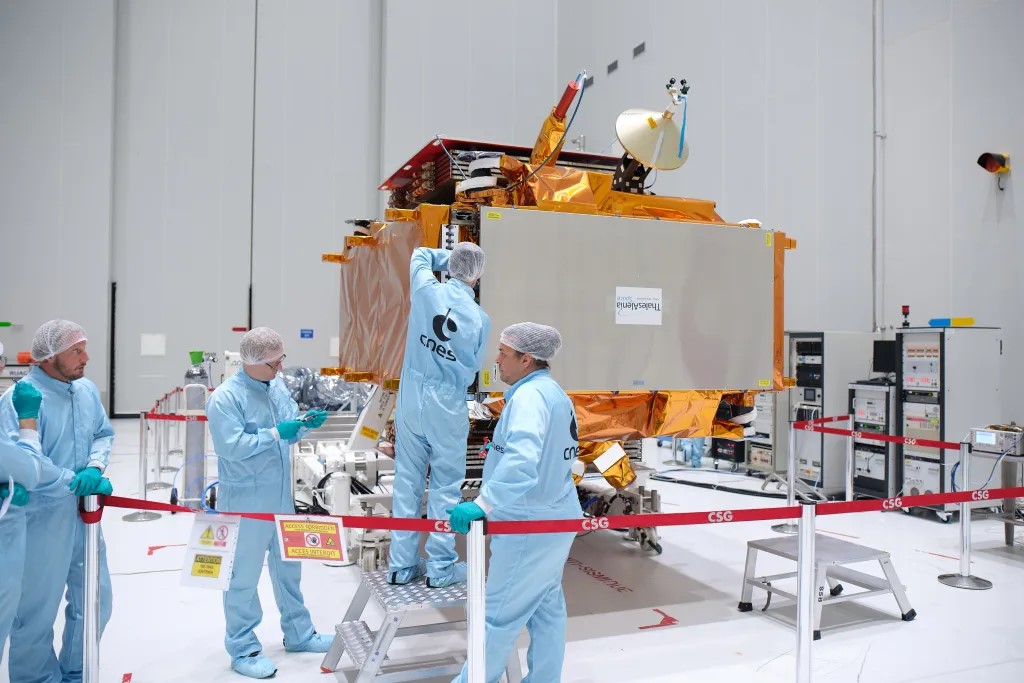It’s been a busy week for the Sentinel-1C satellite!
On Friday, 11 October, the team kicked things off by pressurising the satellite’s fuel tank with nitrogen to check for any leaks in the valves or tank.
After de-pressurising it the next day, they confirmed everything was in great shape! Since working with fuel can be hazardous, only essential staff were allowed in the clean room during this process.
By Monday, the satellite team moved on to functional tests, running checks on all the subsystems.

Airbus team in action
Over at ESOC, our ESA colleagues were also hard at work performing a validation test, receiving telemetry from Sentinel-1C in their first test, as they gear up for the next phase.
At the same time, our launch provider started assembling parts of the Vega C launcher, getting ready for Sentinel-1C’s big day about a month from now.
On Monday, 18 October, the Airbus team in Friedrichshafen connected special waveguide bridges to the Synthetic-aperture radar (SAR) antenna, allowing us to check its health before it’s officially ready for flight.

Waveguide bridges installed

Airbus team final checks
Next up?
The all-important functional tests of the SAR and Automatic Identification System (AIS) payloads in the coming weeks. To make this happen, the team tilted the spacecraft horizontally so they could integrate the waveguide bridges, which link up the antenna’s sections—even when the SAR is packed away in its stowed configuration.


Discussion: no comments